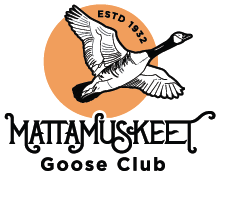The duck stamp is one of the most unique and creative ideas that has ever served to further a cause. It’s practical, it’s collectible, and it changes every year. The U.S. Fish & Wildlife Service has done a tremendous job of promoting conservation by creating an item as beneficial to the environment as it is to the stamp holder. If you’re a waterfowl hunter, then odds are that you’re very familiar with the purchase of required Federal Duck Stamps. But for those who may be new to the concept, we’ll discuss what these tokens represent and how they’ve helped to support the growth of waterfowl populations.
So what is a duck stamp? First instituted in 1934, coinciding with the establishment of the Mattamuskeet National Wildlife Refuge, this physical stamp was created under the federal signing of the Migratory Bird Hunting Stamp Act. Hence, it’s also known as the Migratory Bird Hunting and Conservation Stamp. It serves a number of purposes, the first and arguably most important being that it acts as a license of sorts. Waterfowl hunters ages 16 and older must purchase a current duck stamp to hunt ducks, geese, and other migratory birds.
Hunters can quickly distinguish current stamps because of their unique design. Duck stamps are held in high regard for their beautiful artwork, making them just as appealing to stamp collectors and bird enthusiasts as waterfowl hunters. The U.S. Fish and Wildlife Service (USFWS) holds an annual contest for artists 18 and older. The winner gets to have their design displayed on the duck stamp for that year.
Wildlife photographers and nature lovers also frequently invest in duck stamps. Current stamp holders are given free admission to any paid wildlife refuges in the country. At only $25 per stamp annually, the benefits can’t be ignored. But it’s how the money is used that makes the real difference. According to the USFWS, 98% of profit from duck stamps goes to reinforce bird habitat conservation efforts, including flood control, erosion prevention, and water purification.
This contribution has gone a long way in supporting waterfowl species across the country. In fact, the USFWS has raised over $1 billion to protect over 6 million acres since the start of the program in 1934. Better habitats mean better breeding grounds, which means an increase in population numbers. This is great news for hunters, photographers, and wildlife enthusiasts alike. If you’ve already acquired your duck stamp, then you’re ready to go hunting. For even more benefits, join the Mattamuskeet Founders Club. With discounts on apparel and access to special members-only events, you won’t want to miss out. Get in on our historic relaunch today!












